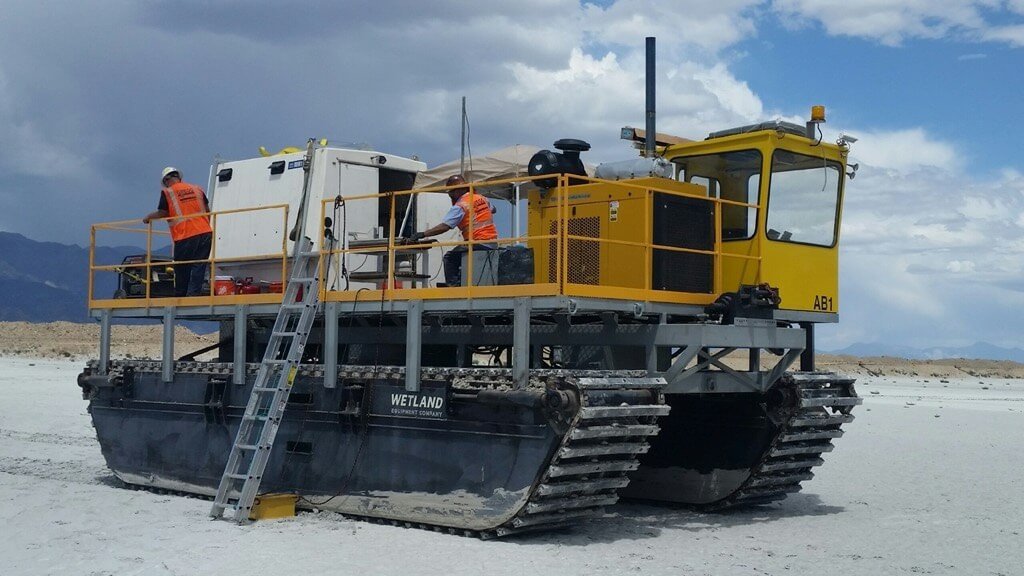A marsh buggy is a powerful machine designed to handle tough, swampy terrain. Whether you need one for construction, dredging, oil exploration, or environmental restoration, choosing the right one is crucial. In this guide, we’ll cover everything you need to know before buying a marsh buggy, from its key features to maintenance tips and cost factors.
What Is a Marsh Buggy?
A marsh buggy, also called an amphibious excavator or swamp excavator, is a heavy-duty vehicle built for operating in wet, muddy, or flooded areas. These machines use large pontoons to stay afloat and move through difficult terrains like marshes, swamps, and wetlands.
How Does a Marsh Buggy Work?
A marsh buggy moves using wide, pontoon-style tracks that provide flotation and prevent sinking. Some models have retractable pontoons for better versatility. These machines can also be equipped with excavator arms, dredging pumps, and cutting tools, depending on the job.
Key Features to Consider
1. Pontoons and Track System
- Choose aluminum or reinforced steel pontoons for durability.
- Look for sealed, leak-proof pontoons to prevent water damage.
- Ensure the track system provides enough flotation and traction for your specific work environment.
2. Excavator Attachments
- Standard Buckets: Best for digging and moving materials.
- Dredging Pumps: Ideal for removing silt and clearing waterways.
- Cutting Heads: Useful for cutting through dense vegetation.
3. Engine Power and Fuel Efficiency
- Consider a diesel-powered engine for heavy-duty work.
- Look for fuel-efficient models to save on operating costs.
- Check engine horsepower to ensure it meets your workload requirements.
4. Weight and Load Capacity
- Heavier models offer more stability but may be harder to transport.
- Lighter models are easier to maneuver but may have lower lifting capacities.
5. Mobility and Transportability
- Some marsh buggies can be disassembled for easy transportation.
- Consider whether you need a self-propelled or towable model.
Types of Marsh Buggies
1. Standard Marsh Buggy
- Designed for general-purpose work in wetlands.
- Equipped with basic pontoons and tracks.
2. Amphibious Excavator
- Comes with a hydraulic excavator arm.
- Ideal for digging, dredging, and sediment removal.
3. Swamp Dredger
- Specialized for deep water and heavy dredging.
- Often used in coastal restoration projects.
Applications of Marsh Buggies
1. Construction and Infrastructure Development
- Used in road building, bridge construction, and levee repair.
- Helps with laying pipelines in wetland areas.
2. Environmental Restoration
- Helps in restoring marshlands and coastal habitats.
- Used for removing invasive plant species.
3. Oil and Gas Exploration
- Essential for offshore drilling support.
- Used for transporting equipment through wetlands.
4. Flood Control and Dredging
- Clears waterways, canals, and drainage systems.
- Prevents flooding in coastal and low-lying areas.
Cost and Budget Considerations
1. New vs. Used Marsh Buggies
- New machines come with warranties and latest features but are more expensive.
- Used models are more affordable but require careful inspection.
2. Price Ranges
- Entry-level models: $100,000 – $200,000.
- Mid-range machines: $200,000 – $500,000.
- High-end or custom-built: $500,000+.
3. Financing and Leasing Options
- Many dealers offer payment plans.
- Leasing is a good option for short-term projects.
Maintenance and Upkeep
1. Regular Inspections
- Check pontoons for leaks and track chains for wear.
- Inspect hydraulic systems for leaks and pressure issues.
2. Cleaning and Lubrication
- Wash off mud, debris, and saltwater after each use.
- Keep moving parts well-lubricated.
3. Engine and Fuel System Maintenance
- Change filters and oil regularly.
- Use high-quality fuel to prevent clogging.
4. Storage and Transport Precautions
- Store in a dry, covered area.
- Drain water from pontoons if storing for long periods.
Where to Buy a Marsh Buggy
1. Authorized Dealers
- Offer warranties and service support.
- Have new and certified pre-owned options.
2. Online Marketplaces
- Websites like Machinery Trader and IronPlanet offer listings.
- Always verify seller credibility before purchasing.
3. Custom Manufacturers
- Some companies build custom marsh buggies based on project needs.
- Best for specialized industries like mining or offshore drilling.
4. Marsh Buggy for Sale
If you’re in the market for a marsh buggy. There are many options available. You can find brand-new models with the latest features or pre-owned units that can be a more cost-effective solution. When purchasing, consider factors like machine history, maintenance records, and warranty availability. Always inspect the equipment thoroughly or hire a professional to ensure you’re getting a reliable machine that suits your needs.
